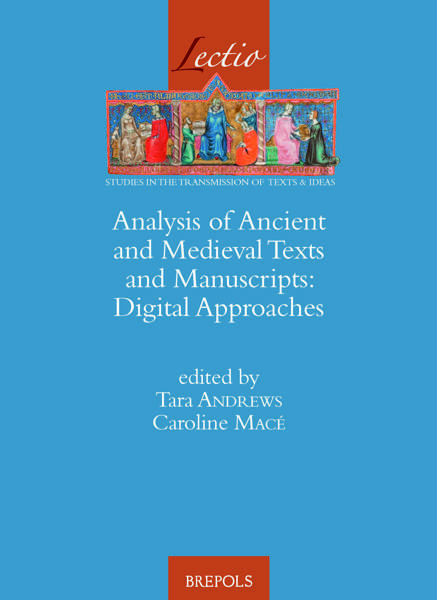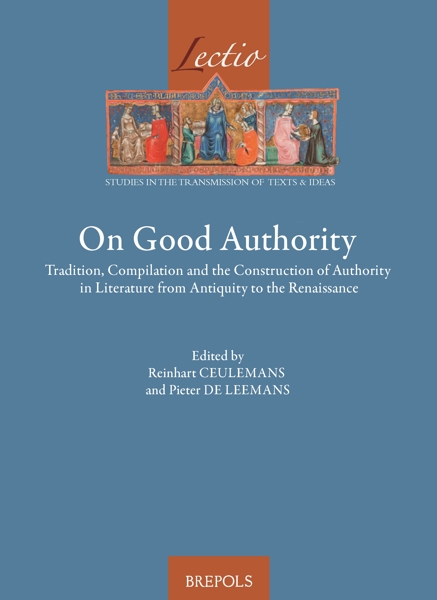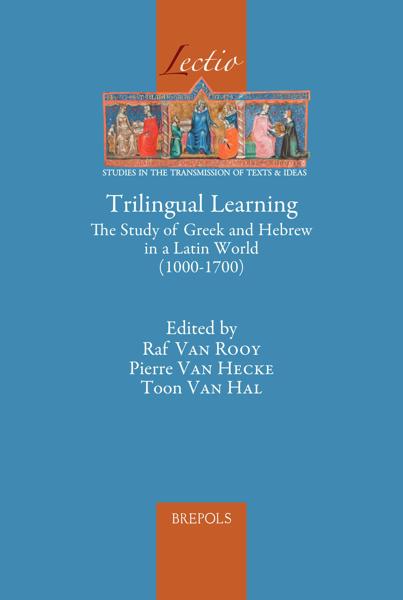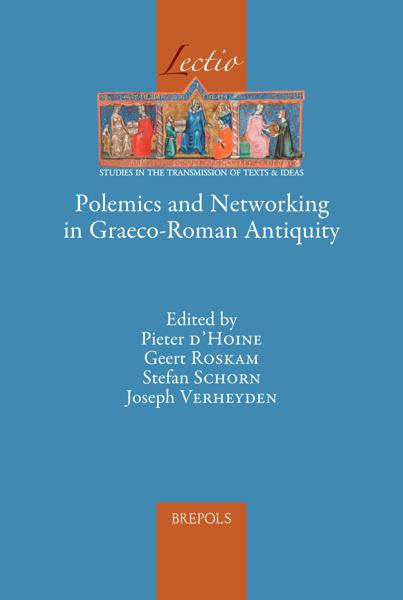
Students, Scholars and Their Books at the University of Louvain (1425–1797)
Studium Lovaniense: Learning across Borders, 1
Violet Soen, Wouter Druwé, Wim François, Ralph Dekoninck (eds)
- Pages: approx. 460 p.
- Size:156 x 234 mm
- Illustrations:80 b/w, 10 tables b/w.
- Language(s):English, Latin
- Publication Year:2026
- € 120,00 EXCL. VAT RETAIL PRICE
- ISBN: 978-2-503-61817-3
- Hardback
- Forthcoming (Feb/26)
- ISBN: 978-2-503-61818-0
- E-book
- Forthcoming
*How to pre-order?
This volume offers new insights into the hybrid world of oral teaching, handwritten note-taking, and printed textbook production by students, scholars and printers at Europe’s crossroads
Violet Soen, Wouter Druwé and Wim François teach at KU Leuven, and have co-ordinated the five-year research program @Aulam about ideas and books at the early modern Faculties of Theology and Law in Louvain. They are all members of LECTIO, the KU Leuven Institute for the Transmission of Texts, Images and Ideas through Antiquity, the Middle Ages and the Renaissance. Ralph Dekoninck teaches at the UCLouvain where he is co-directing the Schol’Art project devoted to The early modern Theories of Arts and letters in the light of Scholasticism, within GEMCA, the Centre for Early Modern Cultural Analysis.
Integrating prosopographical, cartographical, and book-historical data, this collective volume on the first University of Louvain (1425–1797) contributes to ongoing interdisciplinary inquiries into the intellectual productions of students, scholars, and printers in the Early Modern era. The ten contributions examine the state of the art at the University of Louvain, whose output was supported by the vibrant printing presses of the Low Countries and the continual mobility of its scholars across continental Europe. The essays first unravel the transregional circuits of Louvain’s students, scholars, and printers, built upon their geographical mobility throughout Europe. The second part explores how early modern students at Louvain created their study materials by compiling lecture notes, rearranging the contents, and binding them into codices, often adorned with drawings or printed engravings – a practice that remained prevalent until the eighteenth century. Further contributions trace the introduction of the handpress to the city of Louvain, which, beginning in 1473, brought new opportunities for producing textbooks for broader markets, as typography and physical features transformed handbook production. Louvain’s publication network was especially dense in the sixteenth century, and publication rates remained high through the eighteenth century. This volume offers new insights into the hybrid world of oral teaching, handwritten note-taking, and printed textbook production by students, scholars, and printers at one of Europe’s intellectual crossroads.
Introduction
From Magister Dixit to STUDIUM.AI: New Perspectives on Students, Scholars and Their Books at the University of Louvain (1425–1797) (Violet Soen)
Part I. Transregional Circuits of Students, Scholars, and Printers
Louvain Scholars on the Move: Networks and Mobility Patterns at the Early University of Louvain. An Analysis of Academic Mobility (1425–1797) (David de la Croix & Mara Vitale)
From Transregional Recruitment to Self-reproduction: Building a Teaching Staff at the University of Louvain in Its First Two Decades (1425–1443) (Christiaan Engberts)
Who’s Who in STUDIUM.AI: New Metrics about Students, Scholars and Printers at the Early Modern University of Louvain (1425–1797) (Violet Soen & Yann Ryan)
Part II. Student Notebooks and Culture
The Louvain Lecture Halls during Theological Controversy: The Benedictine Student Stephanus Puelincx and His Notes on the Lectures of Jacobus Janssonius (c. 1607) (Linde Van den Eede)
In the University Classroom: Seventeenth-century Notebooks of Arts Students at the Universities of Louvain and Leiden (1651–1700) (An Smets)
Drawing Practices as Learning and Recreational Processes in Louvain Student Notebooks (Seventeenth-Eighteenth Centuries) (Gwendoline de Mûelenaere)
Honesti et probi adolescentes: Pardon Letters and Student Violence at the Early Modern University of Louvain (Sixteenth-Seventeenth Centuries) (Gert Gielis, Luke Giraudet & Quentin Verreycken)
Part III. The World of Books and Cartography in and beyond Louvain
The Importance of Typography in Knowledge Transfer: The Materiality of Louvain Printed Philosophy Textbooks (1474–1562) (Dieter Cammaerts)
Shedding (More) Light on Sixteenth-century Mapping Practices: Pieter Pourbus’s Application of Gemma Frisius’s Triangulation Methods (Jan Trachet & Hendrik Hameeuw)
Integrating Library and Prosopographical Data in the Early Modern Publication Network of the University of Louvain (1501–1797) (Rossana Scebba & Margherita Fantoli)
Index




